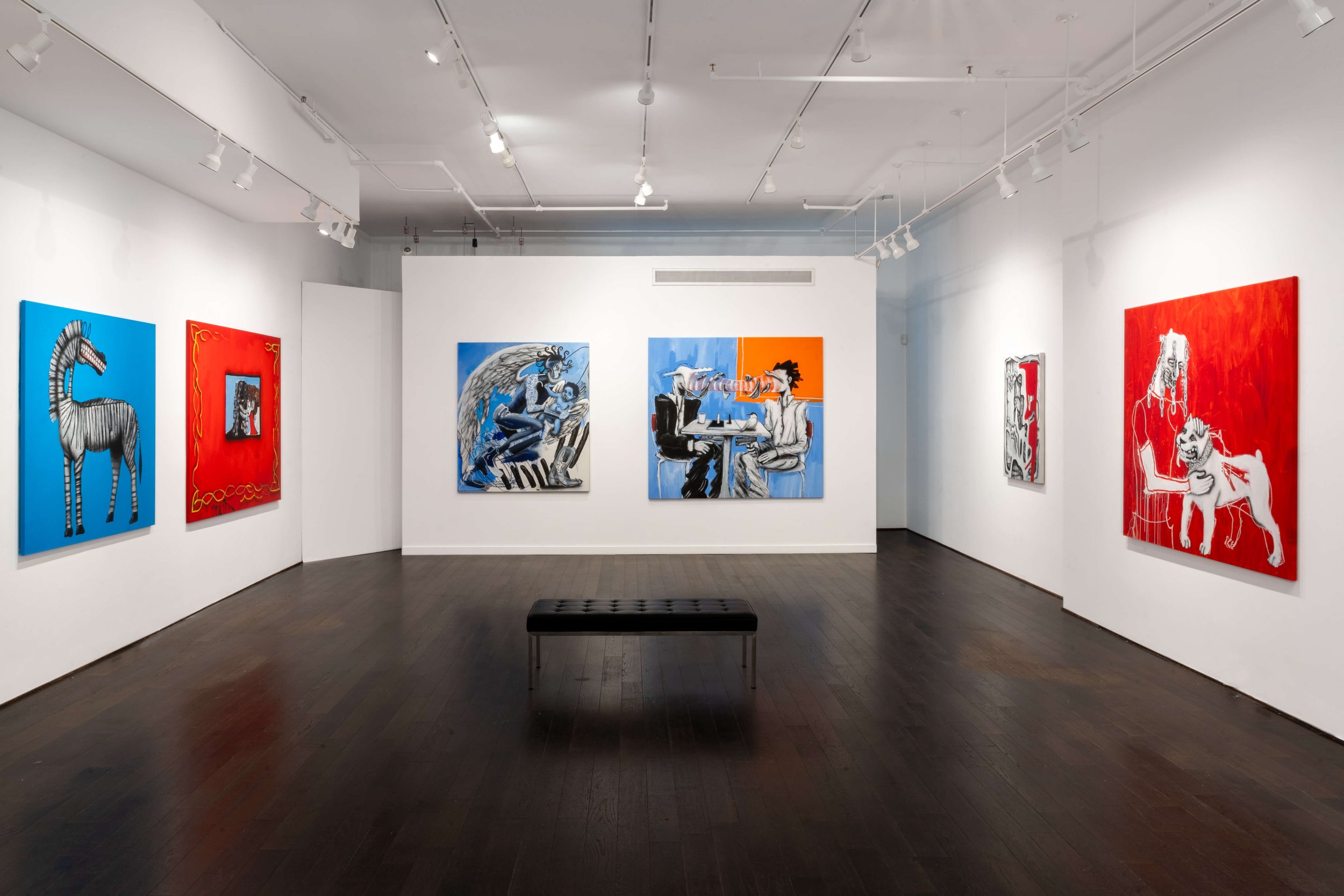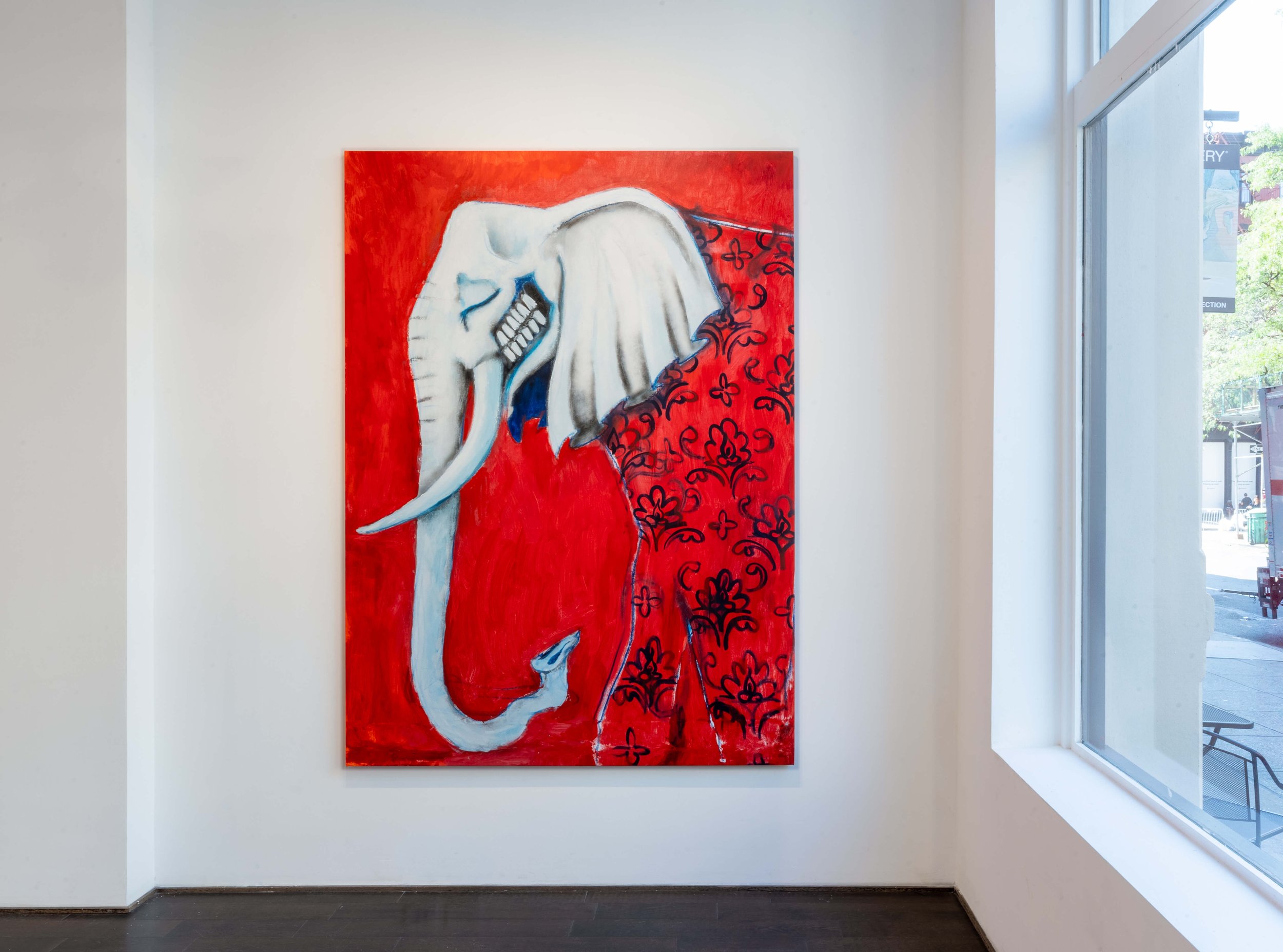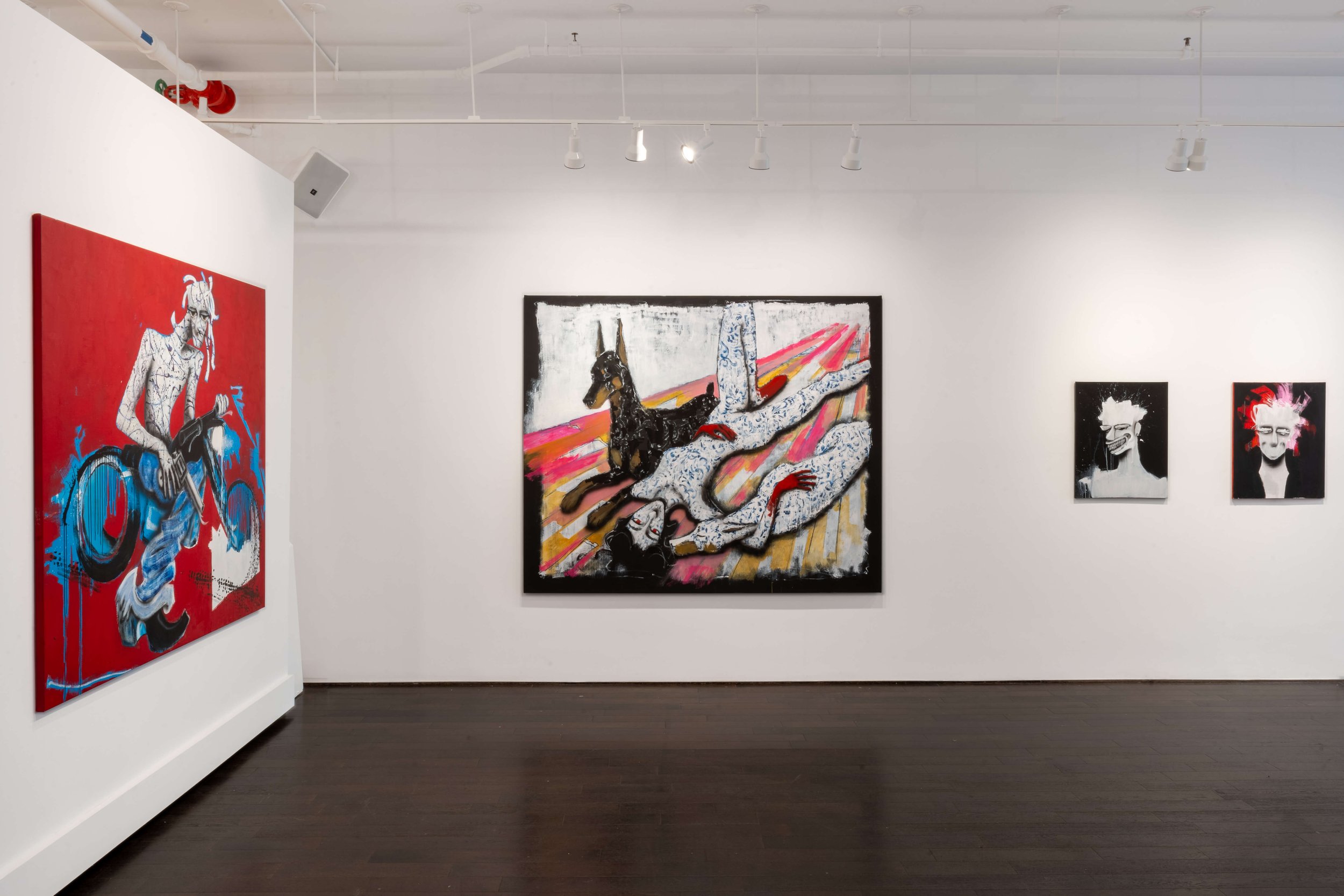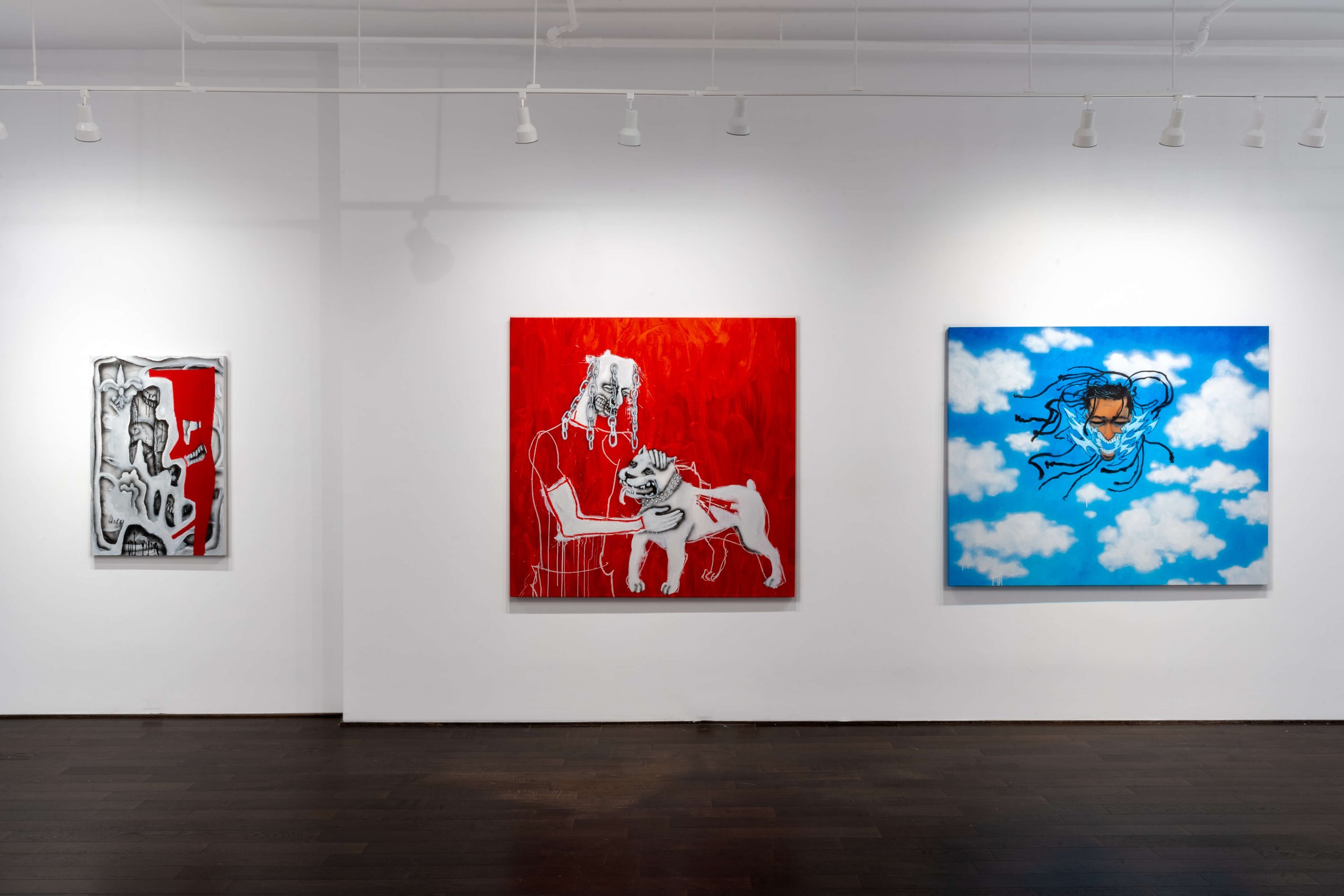Logan Sylve: Spider Talk
ON VIEW
October 5 -October 26, 2023
RECEPTION
Thursday, October 5, 6-8pm
LOCATION
413 West Broadway
New York, NY
-
Logan Sylve (b. 1995) hopes to curate an appreciation of people's different perspectives on his work. He doesn’t create with a goal in mind, rather tries to encapsulate moments of the human experience in hopes it ripples out to viewers and they consider what it means to live. Recognized for recurring motifs of teeth, eyes, and grinning characters, Sylve blends elements of surrealism, expressionism, illustration, and animation using paint, ink, pencil, and sgraffito. Sylve’s characters are recurring and unique, evolving from the artist’s visual dialog as a way to depict emotions. The artist lives and works in New York.
Chase Contemporary is pleased to announce Spider Talk, a solo exhibition of new paintings by New York-based artist Logan Sylve. Sylve’s work explores the push and pull between what we as people present to the outside world versus the complexity of our internal realities. The exhibition will open on Thursday, October 5th at 415 West Broadway in SoHo. An opening reception with the artist will be held from 6-8pm.
Many of these paintings were created in the gallery’s artist studio, in the lower level of the gallery. Subject matter ranges from complex figurative works to playful renditions of animals against vibrant, primary backgrounds. The presentation places scenes of human social interactions or solitary moments, with all the complexities and nuances of our makeup, in contrast to simple compositions of animals whose existence and intentions are far more straightforward and undefiled. Sylve is interested in the nature of people versus the nature of animals.
A painting titled Cipriani depicts two men dining at a table, grinning and interacting with each other above the table, while simultaneously aiming a gun against one another underneath the table. This recurring motif represents the hidden truths or opposing forces that sometimes lie beneath the surface. The painting was named after the famous restaurant on West Broadway, where people often go to discuss business, interact with important socialites, or simply to “be seen.” It is a social atmosphere particularly ripe for alternative motives or overt displays of aggrandizement.
Color is important to his work through its representative abilities, using pigment to represent another side of a person, a dual personality within a character or figure. An example of this is the work titled Commute, where his black haired figure represents what he believed God looks like, but he changed his mind when realizing the figure looks too much like himself. The character continues to represent a figure of good intentions - a protagonist. The white figure is unknown to the artist, “but he’s around now,” says Sylve. This relationship could be representative of balance, and the figures may always exist together - a narrative to be continued in his work.
Blue Boot, 2023
Acrylic on canvas
66 x 58 in
3 Blind Mice, 2023
Acrylic on canvas
60 x 58 in









